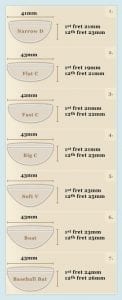Buying a guitar can be a tricky thing. I grew up on the Northside of Colorado Springs, at least what was more north at the time. My Friends were in Briargate and Rockrimmon and if we wanted to go look at gear we had to travel to one of the guitar shops the nearest was 15 min drive away, and when guitar center opened it was a further 10 min. Needless to say as a 13 year old it was hard to get to and from the guitar shops. Online shopping has changed this to an extent. It has introduced more variety into our lives and allowed for more shopping options. It can make it overwhelming at times. However, the principles of buying a guitar remain the same whether in store or online.
Budget
Set your price range. There can be a decent guitar found for just about anything over $100. But that also means to a certain extent you get what you pay for. A solid beginning guitar can range from $100-300. Where an intermediate guitar usually will cost about $300-$500. Most guitars in $500-$700 are sort of a high end intermediate and should be rather well made and pretty durable. Once you crack the $1,000 mark I believe the tips below apply even more strongly to these guitars. These are investments and should be well made because there is no reason to spend $1,200 on poorly made Les Paul when you can spend 900 on a well made Chapman.
How important is brand?
Which leads to the next point. How important is the brand? Probably not many of you have heard of Chapman guitars. But, they are building some seriously competitive instruments. Ibanez, Schecter and ESP have come a long way in the last 15 years and newer brands like Strandberg and Mayones are dominating the middle and high end markets. In the past year, artists have even gotten into the manufacturing game.
The fact is, while the most recognizable names continue to be Fender and Gibson there are amazing guitars out there at any price point and it is worth considering that they may actually be a better fit for you than either one of the two big brands. Especially, when we start seeing how these two treet their own artists, I have my doubts they care too much about customers. I believe your money can usually be better spent. We are living in a golden age of manufacturing for guitars, and it’s a great time to be a buyer.
Feel
Because there are so many options, it is important to familiarize yourself with what is out there. There are a few different neck shapes to be aware of as everyone’s hand is slightly different each neck will feel different. Below is a breakdown of some basic neck shapes.

Everyone has a reason for liking one shape over another. I have guitars though, with Ds, fast Cs and soft Vs and I like them all. But my custom Suhr was built with a flat C. So there you go. To each their own. Make sure you spend some time trying out different necks and comparing them. You can start with this handy comparison.
The body is another aspect that will fit each person differently. I recommend you know how you like to hold your guitar. And then how it should fit against your body. Ideally you’ll be spending many hours with this instrument so it is important to make sure it doesn’t cause your arm to go to sleep or dig into your rib cage. Find one that is balanced right for you. You want one that sits comfortably against your body and is easy to play. If it feels awkward in the store, it isn’t going to get better. Buying a guitar is entering into a relationship and just like any relationship you shouldn’t be spending any time trying to convince yourself,” yeah it’s awkward now but it’ll get better.”
Construction
How the guitar is built is important to the longevity of the instrument and its playbility. There are a couple of key things that can help you avoid a lemon on any guitar.
First check the neck. Is it straight? If you look down the edge of the neck from both the bridge and the but it should be straight, not bowed and certainly not twisted. I did a video on this that you can check out here.
If you do see any bowing it could just need a simple truss rod adjustment. If you aren’t familiar with what this you can learn more about it here. But, if you don’t know how to do this or are unsure about it, seek a professional because you can severly damage your guitar if you don’t know what you are doing.
Of course check out the hardware and see how well it seems to be put together. One last indicator though is the frets. Frets will contribute to how the neck feels and playability but if they are sticking out of the edge of the neck and grab your hand, it can be a sign of shoddy manufacturing or just the fact the guitar is way too dry. Check to make sure none of the notes buzz or fret out. This can be an indicator of uneven frets, or a bowed (or worse, twisted) neck. Play a simple chromatic scale or 4 finger exercise to move all the way up the fretboard and check all the frets.
These are things to do to make sure you know what you are getting. I can’t entirely discourage purchasing online, Reverb has some great deals and great guitars. One last piece of advice, don’t shy away from a good used guitar. However, it is important to take the time to know what you like and what works with how you play and the sounds you want to make. Take your time, read reviews and know what you’re getting.
